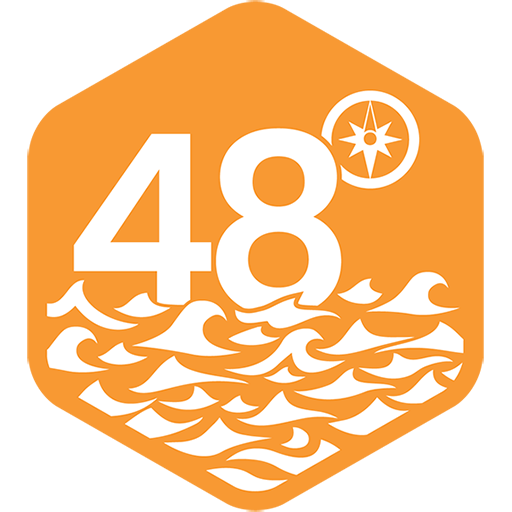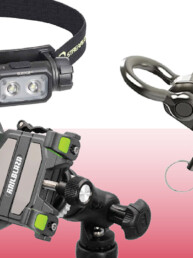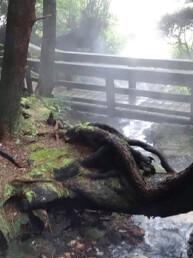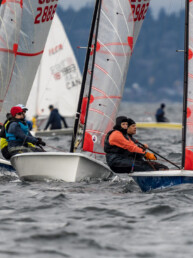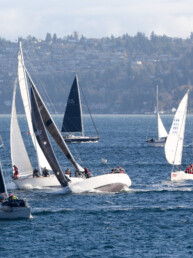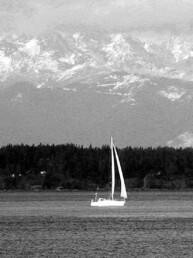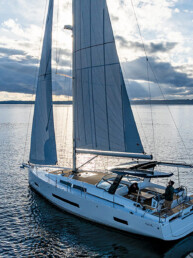Emergency Repairs in the remote waters of Gwaii Haanas National Park
We were burned out and needed to get away. For many recreational boaters, this means spending an hour buying groceries and beer, casting off the dock lines, and heading out on the boat to the nearest Gulf or San Juan island to drop the hook—and there’s nothing wrong with that. But last summer, my partner and I were seriously burned out and we seriously needed to get away. So we decided to take the boat to Haida Gwaii… and live there.
Many people (even Canadians, I’m sorry to say) don’t know about Haida Gwaii. Or they still call it “the Charlottes.” Geographically, Haida Gwaii is a large archipelago roughly 200 kilometers north of Vancouver Island, 100 kilometers south of Ketchikan, and 100 kilometers west of mainland British Columbia. It is about as far north as a Canadian can travel along the coast before hitting the Alaska Panhandle. To travel to Haida Gwaii, one must either traverse Hecate Strait—a notoriously dangerous stretch of shallow water between the mainland and the archipelago—or cross the Pacific Ocean. There are no haulout facilities on Haida Gwaii; if your boat needs repairs, you must somehow get it back to the mainland.
All this appealed to my partner, Trevor, and me. After a few years of living on the Sunshine Coast—an enormously popular cruising destination—we had seen enough crowded docks, harbors choked out with mooring buoys, and anchorages filled to capacity. We had heard the north coast was quiet and peaceful—desolate, even, in places.
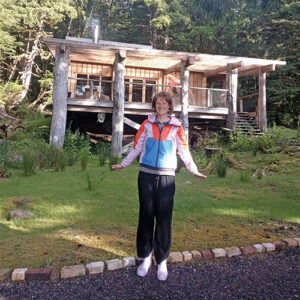
We planned to leave in mid-May and work our way up the coast on Trevor’s 60-foot wooden ketch, Bunga Raya. We would stop over in several places along the way, such as Calvert Island, Ocean Falls, and Shearwater before crossing Hecate Strait (at its wider, lower half) to Rose Harbour, at the southern tip of Haida Gwaii, in Gwaii Haanas National Park.
Before we left the Sunshine Coast, I purchased our park passes and did an online orientation; two requirements for entering Gwaii Haanas between June and September. It is necessary to specify when you will enter the park on your boat because visitors are limited; however, as all cruisers are well aware, weather is unpredictable and can make fixed dates difficult to plan around. The park employees assured us that if we had to hole up somewhere for weather reasons we could change our dates, but this wasn’t necessary. On June 18, just as we’d planned a month earlier, we left our anchorage off Price Island and crossed Hecate Strait in one 16-hour run to Rose Harbour.
Rose Harbour is an anomaly in Gwaii Haanas. It is the only privately owned property in the park—a small settlement on the north coast of Kunghit Island of a few homes and quite possibly one of the most exclusive “restaurants” in the world. The Gwaii Haanas Guest House primarily serves Moresby Explorer clients, but if you call on the radio and ask very nicely—and if there’s room—you may be allowed to join that evening’s meal. We were lucky. The meal incorporated locally grown vegetables from a Rose Harbour garden, as well as local seafood, and was so amazingly delicious I can still remember it vividly more than a year later. There was even live music.
Our next radio call was to the Watchmen at SGang Gwaay, a small island to the west of Kunghit. It is always necessary to radio call and gain permission from Haida Watchmen before going to shore at cultural sites. We were met on the island by the two Haida Watchmen who were currently living on the island—they rotate between the various locations throughout the season—and were taken on a tour of the historic village SGang Gwaay Llnagaay (Nan Sdins). The poles, as is the Haida custom, were being allowed to weather away, but the shapes on the poles—teeth, eyes, and claws—were still distinct and fascinating to see.
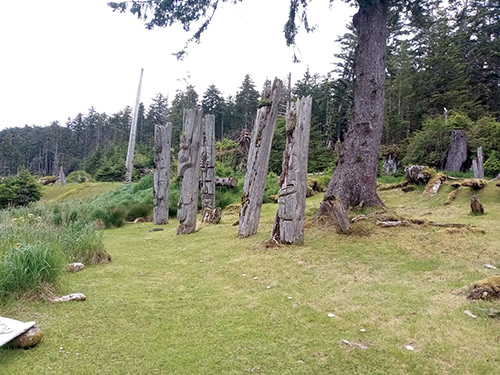
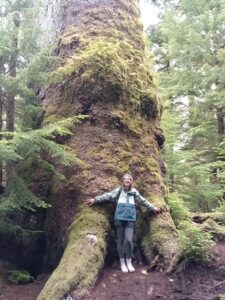
Next, we visited the hot springs, which were simply perfect; and Windy Bay, which had a modern pole and modern history as a locus for protests against exploitative logging, as well as the largest tree I have ever seen in my life. We were leaving Windy Bay to anchor somewhere safe nearby for the night when the titular trouble in the park occurred. It was a beautiful evening, but the wind was picking up, and we congratulated ourselves on leaving Windy Bay just before the wind would have intensified the experience.
We pulled into a protected cove and Trevor motored us towards the shore to drop the crab trap in the shallows. We were planning to drop the trap and then motor to deeper waters; the tides in Haida Gwaii are massive, an added layer of difficulty for recreational boating up north. As we approached the shore I noticed that I could see through the clear water to the rocks on the ocean bottom beneath us.
“Hey, we’re getting pretty close to the shore,” I said. We continued to glide towards the trees, and suddenly the shallowness of the water seemed irrepressibly alarming.
“Trevor!”
“I don’t have reverse!” he replied, cranking the wheel hard to port. Apparently, we didn’t have forward, either; we glided slowly to the left, still in dangerously shallow waters, and terrified.
“Steer,” Trevor shouted to me as he dropped our zodiac out of the davits and jumped down the six feet of freeboard into it. He started the outboard and revved it, pushing the inflatable hull into the starboard side of the boat and pushing us sideways—a MacGyver bow thruster. After a few minutes of him pushing and me steering, Bunga Raya was back in safe waters once more. Trevor dropped the anchor—releasing the clutch to freewheel a couple dozen feet of chain in the span of forty seconds. We were safe, but cast under the awful shadow of what had almost happened to us.
Bunga Raya is very large and heavy, built of a Malaysian hardwood called Chengal. If she had beached upon this remote shore, we would not have been able to be rescued via tow by another boat. The tide would have gone out and the boat—all thirty-five tonnes of her, would have keeled over. Trevor would have had the fortitude to lean her uphill, at least, but unless the tides were getting larger with a waxing moon, Bunga Raya would have been stuck there for several weeks, or longer—possibly, forever.
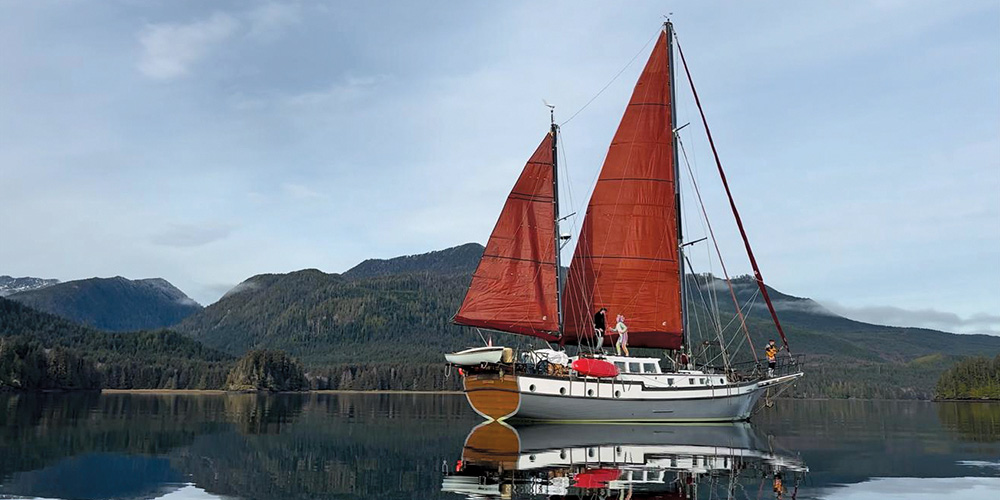
Trevor did not allow himself much time for hypothetical horror stories. Within a few minutes, he was down in the engine room, troubleshooting. The problem was obvious: the shaft had completely separated from the gearbox, bringing the drive flange with it and dumping all of the gear box’s oil into the bilge in the process. First, we pumped the excess oil into a barrel and cleaned up any residual oil with oil cloths. We hoped, at first, that a bolt had simply come loose, but upon further inspection Trevor saw that the main bolt that holds the coupling flange into the gearbox had sheared cleanly in half.
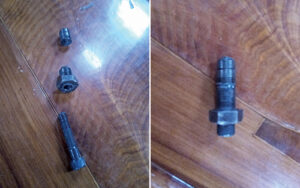
“But how on earth is it possible that the entire motor is held together by one single bolt?” I asked, wringing my wrists a little.
“Well, it’s just the drive shaft—not the entire engine,” answered Trevor, a little obtusely. Trevor, with characteristic optimism, was cheered by the fact that the broken bolt wasn’t seized in the output shaft of the gearbox. It was easily unwound with a small screw driver and he took the halves of the parted bolt up to his workshop in the bow, which doubles as an ancillary head. The small bow workshop in Bunga Raya does not have standing head room, but it does have a drill press, band saw, and metal lathe, among many other various tools and supplies. After confirming that he did not have any bolts the same as the sheared bolt, which, being from a British engine, had a funky thread pattern, he decided that the best thing to do would be to bolt the bolt back together with another, smaller bolt. He placed each half into the lathe, center-drilled each, ran a ⅜ thread into the lower half, coated a ⅜ bolt in JB Weld and threaded it down the middle. It sounds simple when written out more than a year later, but how many of you have ever bolted a bolt back together in the middle of a very remote marine park? We certainly hadn’t.
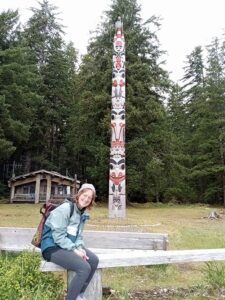
Luckily, we had almost enough oil on board to refill the gearbox. As a friend of ours once told us, “Some oil is better than no oil.” With the gearbox 80% full of halfwise correct oil—fixed weight, not mixed weight—we fired the motor back up. Much to our relief, it started immediately and worked well for the journey’s duration as we made the long drive straight to Daajing Giids, the nearest port with a post office. We missed Tanu and Cumshewa Inlet, locations we had been excited to visit, in our haste to make port and resolve our issue. We motored for eight hours, cut the mark on the sandbar a little, and were drinking beers at the pub before dark, with two new bolts on their way—prudence dictated we add a spare to the order. Thus closed the most unexpected chapter of our time in Gwaii Haanas.
We had come to Haida Gwaii because we were burned out and needed to get away, and it turned out to be a perfect restorative environment—everything we had been longing for with affordable moorage rates and abundant foraging opportunities. It also allowed us to see our former lives down south with fresh eyes. The grass—or wind—is always fresher on the other side and, after a year up north, we began to miss the convenience and connectedness of our former cruising grounds. When you leave the wharf in Daajing Giids (or “DG” as locals call it), you face a minimum of a two-day cruise across hazardous waters to the nearest port with a cafe. Journeys by air or ferry are expensive and subject to weather. Trevor and I missed being able to island hop, and we also missed free shipping.
We returned south the next spring and I am now writing this story from Canoe Cove, on the Saanich peninsula. We chose to travel the less-taken route out of Haida Gwaii, shooting through “the ditch” between Moresby Island and Graham Island and running down the remote western coast of the archipelago. We spent our first night in Armentieres Channel, our next in Tasu, and then motorsailed overnight to the northern tip of Vancouver Island to spend the night anchored off Nigei Island. Once we reached Nigei, we could relax, having left the open ocean behind. When trouble hits down here, it seems like there is always someone willing and able to give you a tow.
For better or worse, we’re never far from a cafe now. I wonder if the itch will hit us again, sooner or later, to get off the beaten track. If so, we may try for a compromise and journey to the west coast of Vancouver Island… I hear it’s pretty over there.
Wherever we go next, we’ll probably tread a little more cautiously in shallow waters and will be glad to have that back-up bolt should we ever need it. Still, these belt-notches of disasters avoided and mishaps navigated are part of what makes the cruising life so dynamic and worthwhile.
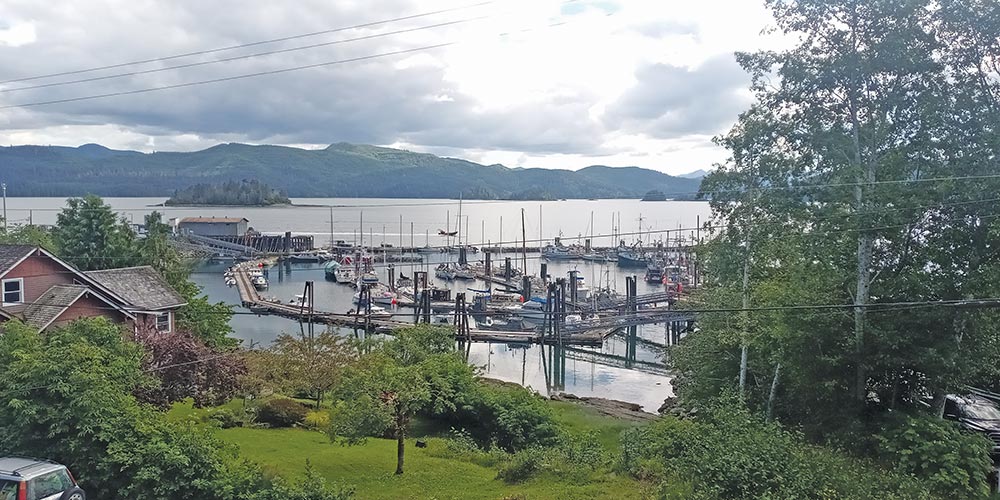
Emma Biron and Trevor are enjoying being back in more familiar waters. They just welcomed their first child to the crew.
Emma Biron
Emma Biron lives in Pender Harbour, BC, and can often be seen sailing her Pearson Triton 28 around the harbour and beyond. In addition to sailing, she also loves reading, writing, refits, and rowing.
